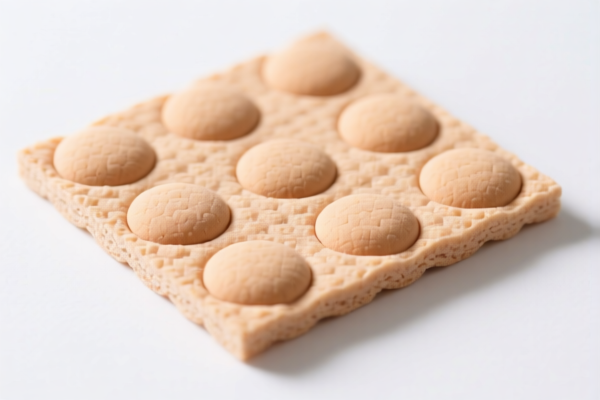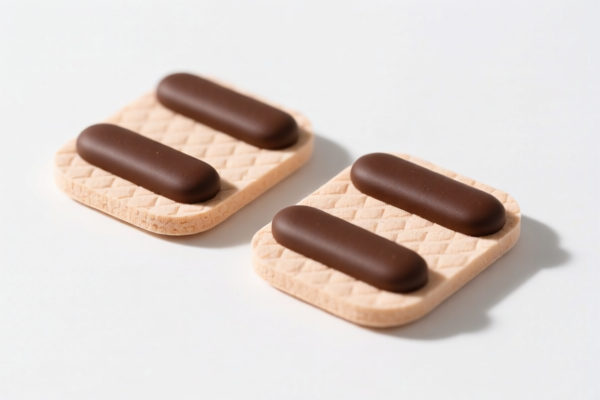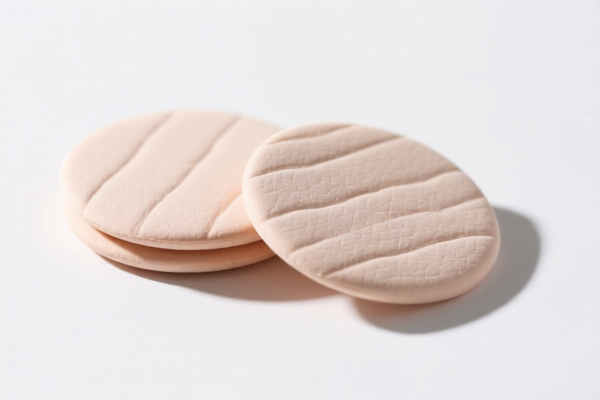| HS Code | Official Doc | Tariff Rate | Origin | Destination | Effective Date |
|---|---|---|---|---|---|
| 5601210010 | Doc | 58.6% | CN | US | 2025-05-12 |
| 5601210090 | Doc | 58.6% | CN | US | 2025-05-12 |
| 6307908500 | Doc | 35.8% | CN | US | 2025-05-12 |
| 6307909885 | Doc | 37.0% | CN | US | 2025-05-12 |
| 4818100000 | Doc | 55.0% | CN | US | 2025-05-12 |
| 4818900080 | Doc | 37.5% | CN | US | 2025-05-12 |
| 4823908620 | Doc | 55.0% | CN | US | 2025-05-12 |
| 4823907000 | Doc | 55.0% | CN | US | 2025-05-12 |




Drain Pad
A drain pad is a component used in various systems to manage and remove fluids, typically water or condensate, from equipment or spaces. Its primary function is to collect and channel liquids, preventing damage, maintaining hygiene, and ensuring efficient operation.
Material
Drain pads are constructed from a variety of materials depending on the application and the fluids they are designed to handle. Common materials include:
- Absorbent Polymers: Often used in disposable pads for condensate collection in HVAC systems. These materials quickly absorb moisture and prevent dripping.
- Rubber: Provides durability and resistance to many fluids, commonly found in appliance drip pans and industrial applications.
- Plastic (PVC, Polypropylene): Lightweight, cost-effective, and resistant to corrosion, frequently used in plumbing systems and condensate drain pans.
- Metal (Stainless Steel, Galvanized Steel): Offers high durability and resistance to high temperatures and harsh chemicals, used in industrial and commercial applications.
- Foam: Used for absorbing spills and leaks, commonly found in air conditioner pads.
Purpose
The core purpose of a drain pad is fluid management. Specific purposes include:
- Condensate Collection: In air conditioning, refrigeration, and dehumidification systems, drain pads collect water produced during the cooling process.
- Leak Prevention: Placed under appliances (washing machines, dishwashers, water heaters) to contain leaks and prevent water damage.
- Spill Containment: Used in industrial settings to capture accidental spills of liquids.
- Hygiene: In medical and laboratory settings, drain pads collect fluids to maintain cleanliness and prevent contamination.
Function
Drain pads function through several mechanisms:
- Absorption: Absorbent pads soak up liquids, reducing the risk of overflow.
- Containment: Pads create a barrier to prevent fluids from spreading.
- Channeling: Some pads are designed with channels or slopes to direct fluids towards a drain or collection point.
- Filtration: Certain pads incorporate filtration layers to remove impurities from the collected fluids.
Usage Scenarios
- HVAC Systems: Collecting condensate from air conditioners, furnaces, and dehumidifiers.
- Appliances: Preventing water damage from washing machines, dishwashers, refrigerators, and water heaters.
- Plumbing: Used under sinks, toilets, and pipes to catch leaks.
- Industrial Settings: Containing spills of oils, chemicals, or other liquids.
- Medical Facilities: Collecting fluids from medical equipment or patients.
- Automotive: Used under vehicles to catch oil or coolant leaks during maintenance.
Common Types
- Disposable Absorbent Pads: Single-use pads made from absorbent polymers, commonly used in HVAC systems.
- Drip Pans: Rigid trays, typically made from rubber or plastic, placed under appliances to catch drips and leaks.
- Spill Containment Mats: Larger pads designed to contain larger spills in industrial settings.
- Condensate Drain Pans: Specifically designed for collecting condensate from HVAC equipment, often with provisions for a drain line.
- Absorbent Socks/Booms: Cylindrical pads used to contain spills and prevent them from spreading.
- Wash Machine Pans: Designed specifically for washing machines, often with a raised lip to prevent overflow.
Based on the provided information, "drain the pad" likely refers to absorbent pads, potentially made of cellulose wadding or paper. Here's a breakdown of relevant HS codes and associated details:
- 6307909885: Other made up articles, including dress patterns: Other: Furniture movers' pads of cotton. This code applies to pads used for protecting furniture during relocation, constructed from cotton.
- 4818100000: Toilet paper and similar paper, cellulose wadding or webs of cellulose fibers, of a kind used for household or sanitary purposes, in rolls of a width not exceeding 36 cm, or cut to size or shape; Toilet paper. This code covers toilet paper and similar sanitary pads made from cellulose wadding or paper.
- 4818900080: Toilet paper and similar paper, cellulose wadding or webs of cellulose fibers, of a kind used for household or sanitary purposes, in rolls of a width not exceeding 36 cm, or cut to size or shape; handkerchiefs, cleansing tissues, towels, tablecloths, table napkins, bed sheets and similar household, sanitary or hospital articles, articles of apparel and clothing accessories, of paper pulp, paper, cellulose wadding or webs of cellulose fibers: Other Other. This code includes a broader range of household, sanitary, or hospital articles made from paper pulp, paper, or cellulose wadding.
- 4823907000: Other paper, paperboard, cellulose wadding and webs of cellulose fibers, cut to size or shape; other articles of paper pulp, paper, paperboard, cellulose wadding or webs of cellulose fibers: Other: Other: Of cellulose wadding. This code applies to articles specifically made of cellulose wadding.
- 4823908620: Other paper, paperboard, cellulose wadding and webs of cellulose fibers, cut to size or shape; other articles of paper pulp, paper, paperboard, cellulose wadding or webs of cellulose fibers: Other: Other: Other: Shoe covers (booties) of a kind described in statistical note 2 to this chapter. This code is for shoe covers made from cellulose wadding.
HS Code Breakdown (Example using 4818100000):
- 48: Paper or paperboard; manufactures thereof, paper pulp, paper or paperboard. This chapter covers products made from paper or paperboard.
- 18: Toilet paper and similar paper, cellulose wadding or webs of cellulose fibers. This heading specifically focuses on toilet paper and similar sanitary products.
- 100000: Toilet paper. This subheading narrows the classification to toilet paper specifically.
Important Considerations:
- Regarding HS code 4818100000, 4818900080, the products are defined as being used for household or sanitary purposes and are typically in rolls with a width not exceeding 36 cm or cut to size/shape.
- Regarding HS code 4823907000 and 4823908620, these codes relate to articles made of cellulose wadding.
- For HS code 6307909885, the material is specifically cotton.
Customer Reviews
No reviews yet.